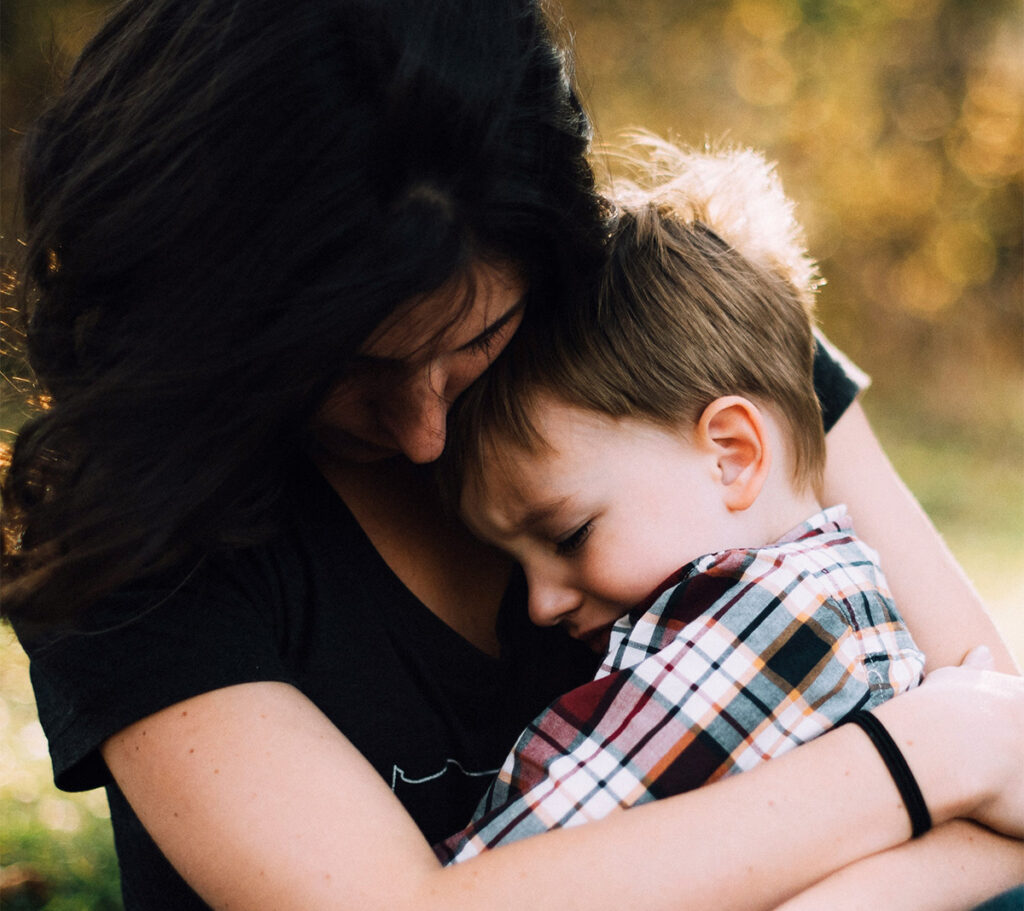Family Counseling Insights brought to you by Patricia McTague-Loft
Seeing a child in distress — in tears and sobbing — is a heartbreaking sight for anyone. It’s even more poignant for a parent when that child is their own. That’s why it’s so natural for mothers and fathers to instantly come to the aid of their child with a hug and soothing words. When the cause of the stress is minor (maybe not to the child, but to a parent who can judge the situation accurately) — a scraped knee or a misplaced favorite toy — then calming the child is fairly quick and easy.

A problem arises, though, when no supportive parent or caregiver is there to quench the fire of childhood distress, when the cause of the stress is constant or when it’s prolonged. That can be, moreover, a very serious problem. At Harvard University’s Center on the Developing Child, the subject is covered in depth in a Guide that focuses on the biology behind the causes and effects of toxic stress in children, including adverse consequences in learning, behavior and health.
The Harvard Guide states the case in no uncertain terms: “Learning how to cope with adversity is an important part of healthy child development. When we are threatened, our bodies prepare us to respond by increasing our heart rate, blood pressure, and stress hormones, such as cortisol. When a young child’s stress response systems are activated within an environment of supportive relationships with adults, these physiological effects are buffered and brought back down to baseline. The result is the development of healthy stress response systems. However, if the stress response is extreme and long-lasting, and buffering relationships are unavailable to the child, the result can be damaged, weakened systems and brain architecture, with lifelong repercussions.”
Stress responses fall into three basic categories. It’s important to point out that these descriptions do not refer to the event that causes the stress — people react to events differently based on a nearly infinite number of variables. Rather, the descriptions refer to the stress response system’s effects on the body.
Positive Stress Response. Events that are natural and unavoidable can be physical or emotional. Minor events can range from an immunization to a first day in pre-school. If an attentive parent or caregiver is there to help the child deal with the situation, all is well. The child’s heart rate briefly increases and some hormone levels rise, then quickly return to normal.
Tolerable Stress Response. Unfortunately, not all natural and unavoidable events are minor. When there is a death in the family, or a serious injury, the quality of the child’s relationships with their parent or other loved ones is extremely important. The child’s brain and other organs are stressed for a longer period of time but the effects should not cause long-term damage.
Toxic Stress Response. The Harvard Guide lists several experiences that can actually disrupt the brain’s “architecture” and other organ systems. The long-term results can be an increased risk in cognitive impairment, and health problems later in life including stress-related diseases, heart disease, diabetes, substance abuse and depression. The experiences that can cause real trouble include “strong, frequent, and/or prolonged adversity — such as physical or emotional abuse, chronic neglect, caregiver substance abuse or mental illness, exposure to violence, and/or the accumulated burdens of family economic hardship — without adequate adult support.”
Childhood stress is a complicated subject. A basic rule of thumb is that the more positive relationships a child has with parents and other supportive adults, the more likely the child will be able to deal with the unavoidable events that cause stress. For a more in-depth discussion of the topic, read the full Harvard Guide here — it includes several informative videos and downloadable PDFs.
There’s also more good news in that there are ways to help children build a foundation that allows them to develop the resilience to cope with the inevitable stresses of life to come. Read How To Help Children Build Resilience.